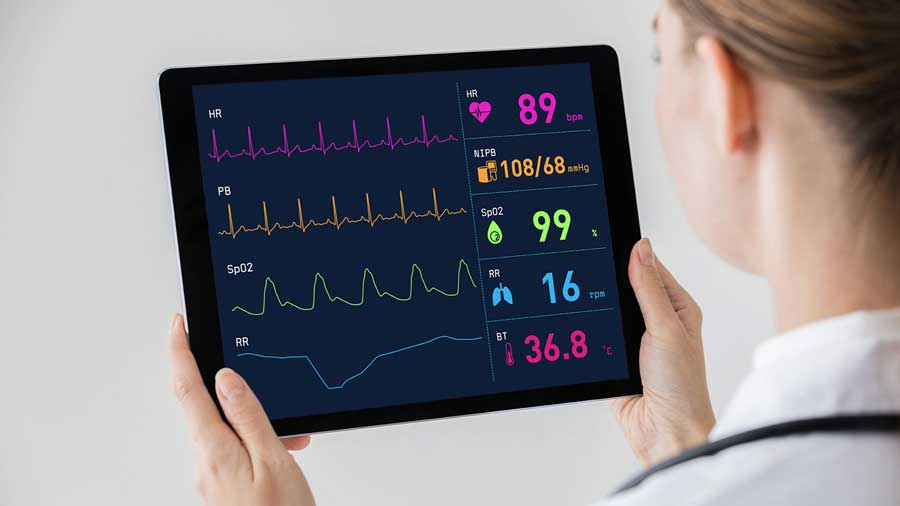Today’s world is built on connection. Our homes, phones and more and more of our devices are communicating with each other. The adoption of IoT is growing and impacting several sectors, including healthcare. Healthcare professionals are increasingly beginning to realize how smart technology can revolutionize healthcare in many different ways. Two key tools will play a role in this change: embedded monitoring systems and smart building connectivity.

The Internet of Medical Things (IoMT) is an increasingly common concept in healthcare.The global IoMT industry is predicted to reach a compound annual growth rate (CAGR) of over 11% between 2017 and 2022. Embedded monitoring systems are one of the technologies used by healthcare. Healthcare professionals can remotely monitor the health and well-being of their patients through IoMT-based biometrics. For example, a sensor can track a patient’s heart rate, blood pressure and temperature with a wearable device, a wearable, while a software system collects and analyzes all data and converts it into actionable recommendations. If a patient’s heart rate suddenly rises, a doctor is automatically informed; as long as the patient’s condition is stable, the doctor can focus on other patients. Simple solutions such as wearables offer clear benefits for both the caregiver and the patient. It can reduce the workload on doctors and nurses and saves time and money because they can provide care remotely. In addition, the patient is offered greater freedom and confidence in their healthcare experience.
Smart infrastructure in healthcare institution
All over the world, more and more residential buildings are being provided with an integrated smart infrastructure. Analysts estimate that in the United States, smart home appliance deployment will reach 42% annual growth between 2017 and 2022. While not strictly a healthcare solution, it is easy to see how this technology can help improve healthcare institutions’ performance. With a smart infrastructure, a doctor can be found faster during a busy shift, the temperature in the hospital can be checked or a healthcare tool can be found quickly. The possibilities are endless. In a busy and large hospital with staff who have to perform different tasks for different patients or colleagues in different locations, searching for a particular device can be time consuming. This tax is reduced with asset tracking by means of a smart infrastructure. You can also keep track of the status of the device. Is it cleaned, inspected and ready for reuse? With an integrated smart infrastructure, building users have access to features that contribute to more efficient, streamlined processes.
Portable sensor button
As part of our smart care systems, we have developed a portable sensor button that you wear around the neck or can be attached to the pants. In addition to tracking a patient’s location, the device can also track important user activity. It can be used to detect a fall or a patient can use it to ask for help in an emergency. In addition, the system provides the operational benefits of collecting, aggregating, processing and transmitting measurements for continuous monitoring, analysis and prediction.

By adopting smart technology and embedded monitoring systems, you can fully optimize each aspect of your operation, no matter how small. Combined with future-proof smart care infrastructure, this will enable your healthcare institute to lead the way into the era of smart care.
